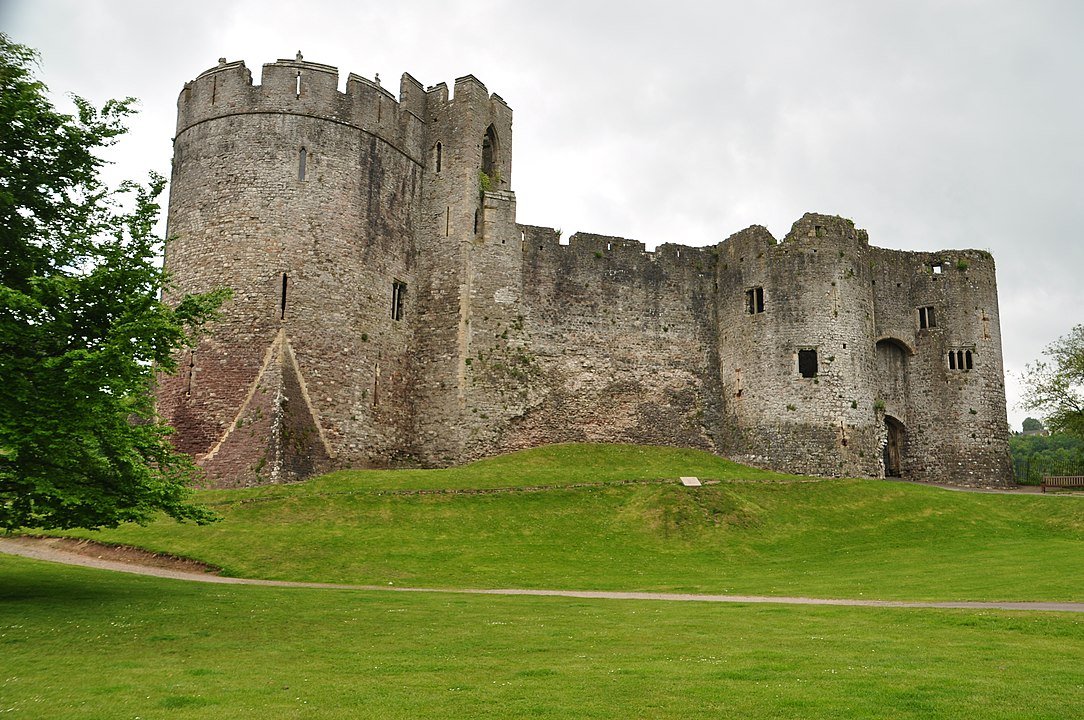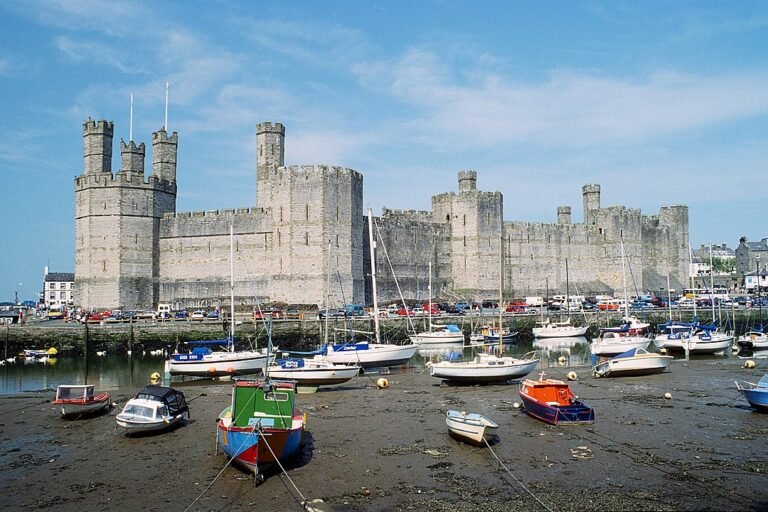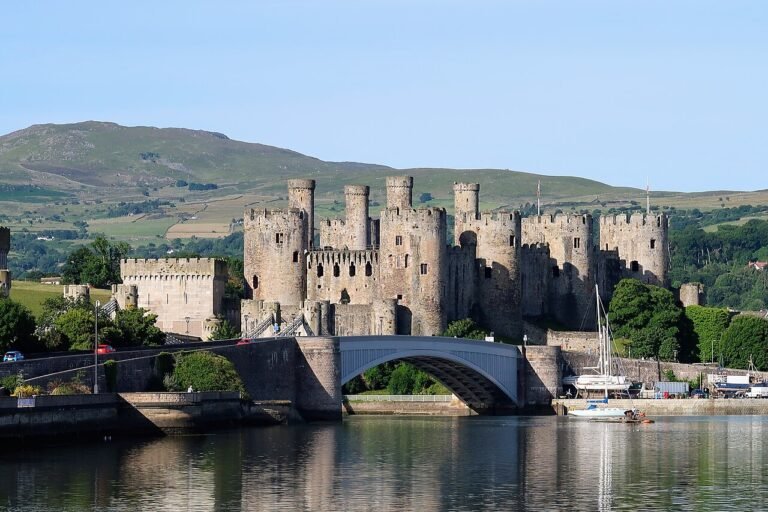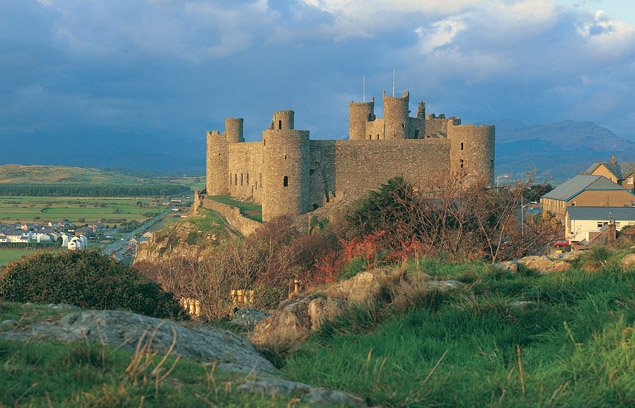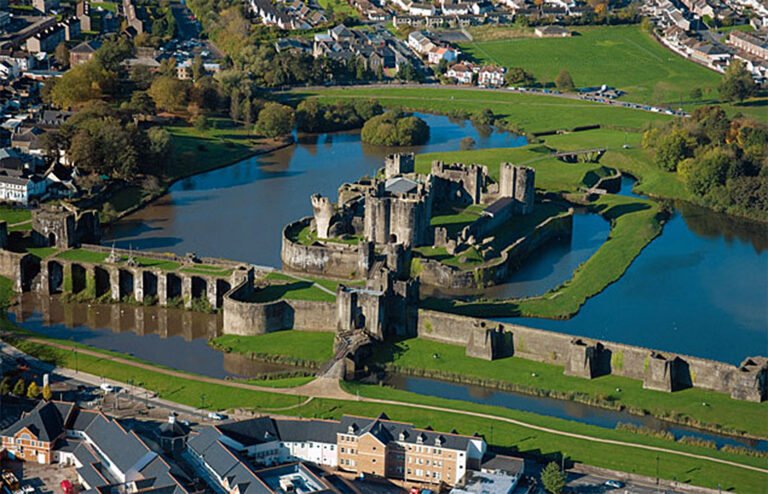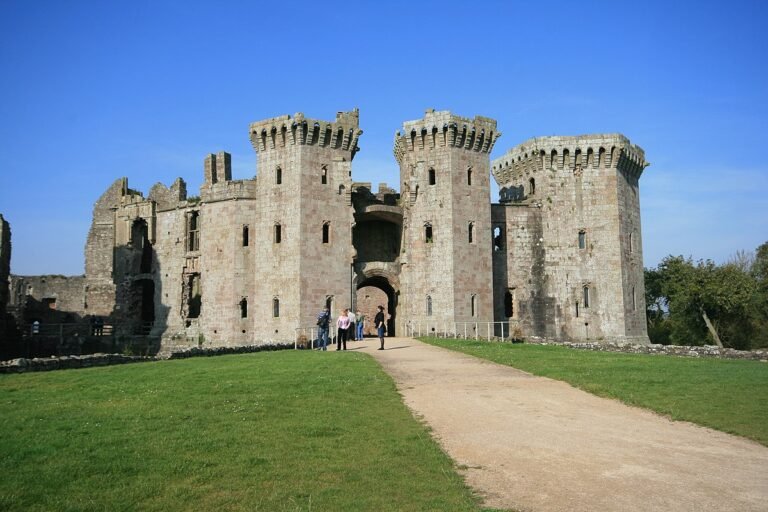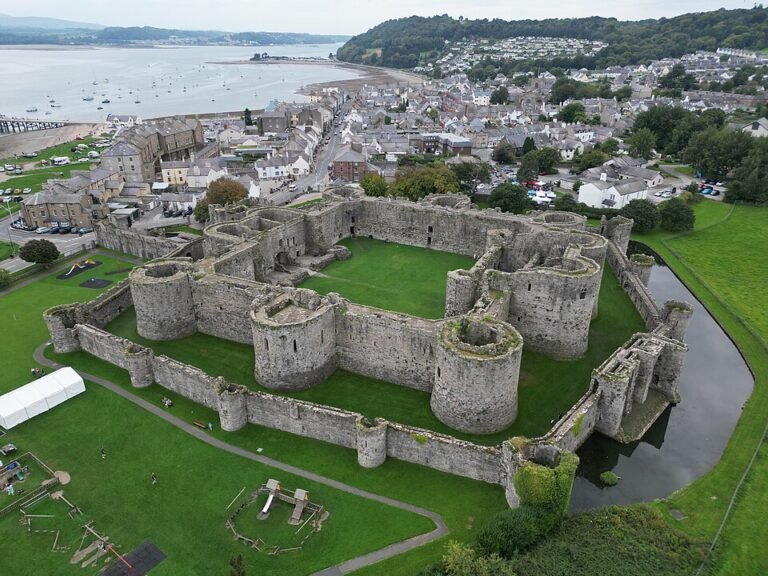Chepstow Castle: A Towering Legacy on the Banks of the River Wye
Chepstow Castle: Overview
Chepstow Castle is one of Britain’s oldest surviving stone fortresses. Set dramatically atop limestone cliffs overlooking the River Wye in Monmouthshire, Wales, it has guarded this strategic location since the 11th century. This ancient stronghold has witnessed Norman conquests, royal intrigue, civil wars, and Victorian romanticism. Its well-preserved towers, gates, and walls make it a favourite for historians, families, and castle enthusiasts alike.
Situated at the southern end of the Wye Valley Area of Outstanding Natural Beauty, Chepstow Castle is also a fantastic base for exploring the surrounding region. The area is known for its lush woodlands, picturesque walking routes, and charming market towns. It’s this blend of nature and history that makes Chepstow such a compelling destination for all kinds of travellers.
Chepstow Castle: Historical Significance
Founded in 1067 by William fitzOsbern, a close companion of William the Conqueror, Chepstow Castle was a statement of Norman dominance following the Battle of Hastings. Built almost immediately after the Norman invasion of England, it was among the first wave of motte-and-bailey castles designed to consolidate power in contested borderlands.
Over the centuries, the castle evolved into a formidable defensive site, reflecting the ambitions and anxieties of its various owners, from the de Clares to the Bigods and the Earls of Worcester. During the English Civil War in the 17th century, it changed hands multiple times between Royalist and Parliamentarian forces, suffering damage and alterations in the process. Yet much of its original Norman structure endures, offering a rare glimpse into medieval military engineering.
Unlike many castles that were later converted into residences, Chepstow remained a military bastion throughout its active life. Remarkably, it houses the oldest castle doors in Europe, dating back to around 1190, preserved now within the castle museum. These ancient oak doors provide a tangible link to a past where strength and fortification were paramount.
Chepstow Castle: Architectural Features
- Great Tower: The earliest part, built c.1067, showcasing Norman military architecture. Thick stone walls, slit windows for archers, and a lack of ornate decoration highlight its defensive purpose.
- Martens Tower: A later medieval addition offering commanding views over the Wye Valley. This section once served as residential quarters and still features remnants of medieval wall paintings.
- Barbican and Twin-Towered Gatehouse: Fortified entries reflecting evolving medieval defence tactics, including murder holes and portcullis systems for controlling access.
- Wooden Doors: The original oak doors are over 800 years old and are housed inside for protection. They are a major draw for historians and conservationists alike.
Chepstow Castle: Key Visitor Information
- Location: Bridge Street, Chepstow NP16 5EY, Wales
- Opening Hours: Daily, 9:30 am–5 pm (last entry 4:30 pm); winter hours may vary
- Tickets: Adults £10.50, children £7.30, under 5s free (2025 prices)
- Accessibility: Uneven surfaces and stairs; limited wheelchair access
- Facilities: Toilets, shop, exhibitions, picnic areas
- Photography: Permitted throughout, no drones without permission
Group discounts are available, and guided tours can be arranged in advance for schools and large parties. Audio guides are also available in several languages, making it an inclusive experience for international visitors.
Chepstow Castle: How to Get There
By Car
Chepstow Castle is accessible via the M48 and A466. There is a pay-and-display car park adjacent to the castle grounds. Signage from the motorway and local roads is clear and easy to follow. Journey times from Cardiff or Bristol are under an hour, making it ideal for a day trip.
By Train
Chepstow Station is a 10-minute walk from the castle with direct services from Cardiff, Newport, and Gloucester. It’s a scenic walk through the town centre, past historic buildings and the remains of the town wall.
By Bus
Regular local buses connect Chepstow with nearby towns and cities, including Monmouth, Bristol, and Newport. Services are reliable and timetables can be checked through Traveline Cymru.
Best Time to Visit
Spring and autumn offer milder weather and fewer crowds, ideal for photography and exploration. Summer sees higher footfall but also offers longer days and seasonal events. Winter can be quieter and atmospheric, though some access may be limited due to weather conditions. Early morning visits provide the best light for photography and a peaceful atmosphere before tour groups arrive.
Chepstow also hosts occasional seasonal events, including medieval festivals, twilight ghost tours, and local food fairs. These add an extra layer of interest, particularly for families and culture lovers.
What to See Nearby
- Tintern Abbey: A hauntingly beautiful ruin just 5 miles away, perfect for romantic day trips. Founded in 1131, it offers an evocative contrast to the martial architecture of Chepstow.
- Wye Valley Walk: Scenic hiking and walking trails along the riverbanks. The route is suitable for all skill levels and provides access to some of the most photogenic landscapes in Wales.
- Chepstow Town Centre: Quaint shops, eateries, and historic buildings, including the town gate and port wall. A great place to unwind post-visit with coffee or an ice cream by the riverfront.
- Caldicot Castle: Another nearby fortress worth exploring, with events and medieval displays. Located just 20 minutes away, it’s perfect for doubling up your historical adventures.
Suggested Itineraries
One-Day Family Visit
- Morning: Arrive by 10 am, tour the Great Tower and battlements.
- Midday: Picnic lunch on castle grounds or nearby cafés in town.
- Afternoon: Explore the exhibition, playtime on the grass, optional short Wye Valley walk.
Families with young children may also enjoy participating in castle-themed scavenger hunts, which are often available during school holidays. There are safe, open spaces for children to roam, and interpretive panels at a child-friendly height.
Weekend Romantic Break
- Day 1: Arrive in Chepstow, sunset castle visit, dinner at a riverside restaurant, stay at a boutique inn.
- Day 2: Visit Tintern Abbey, riverside stroll, lunch at a vineyard or country pub.
Chepstow is also home to several art galleries and antique shops, perfect for couples looking to enjoy a relaxed cultural experience. Wine tastings and local crafts add a personalised touch to a romantic weekend.
Where to Eat and Stay
Dining
- The Riverside Wine Bar: Ideal for evening drinks with a castle view. Their menu features Welsh lamb, seafood, and local ales.
- The Lime Tree: Family-friendly with local Welsh cuisine. Known for its hearty portions and warm atmosphere.
- Mythos Meze Bar: Mediterranean option in the heart of Chepstow. A hidden gem for couples and vegetarians.
Accommodation
- The Beaufort Hotel: Budget-friendly and centrally located. Great for solo travellers and short stays.
- Broadrock Accommodation: Self-catering cottages near Tintern. Ideal for families and longer visits.
- Two Rivers by Marston’s Inn: Great for families and free parking. Comfortable, clean, and conveniently located.
Events and Experiences
- Jousting and Re-enactments: Held during summer months; family favourite. Includes knight training for kids and falconry displays.
- Twilight Tours: Themed night-time tours exploring castle legends and ghost stories. Ideal for older children, couples, and history buffs.
- Educational Workshops: School holiday events with crafts, archery, and storytelling. Facilitated by trained heritage staff to bring the medieval world to life.
FAQs about Chepstow Castle
When is Chepstow Castle open?
Chepstow Castle is open year-round, with seasonal hours:
March – June & September – October: 9:30 AM – 5:00 PM
July – August: 9:30 AM – 6:00 PM
November – February: Mon–Sat 10:00 AM – 4:00 PM; Sun 11:00 AM – 4:00 PM
Last entry is 30 minutes before closing.
The castle is closed on 24–26 December and 1 January.
Where can I buy tickets?
Tickets are sold at the entrance on arrival.
What’s special about Chepstow Castle?
Chepstow Castle is Britain’s oldest post-Roman stone fortress, dating back to 1067. It’s famous for its Norman architecture, medieval gatehouse, and some of Europe’s oldest surviving castle doors. The site evolved over centuries and boasts stunning views over the River Wye.
Is the castle accessible?
Sloping path from the car park (100 m away).
Accessible toilets are in the nearby car park, not inside the monument.
Assistance dogs are welcome.
What facilities are available?
There’s a gift shop, audio guides, water refill stations, picnic areas, and cycle racks. Dogs on leads are welcome in ground-floor areas.
Are there events?
Yes! Chepstow hosts seasonal events like medieval re-enactments, Tudor music days, craft workshops, and history talks throughout the year.
How do I get there?
Chepstow Castle is close to the M4 and A466/A48. The rail station is one mile away. Parking (including accessible and EV spaces) is nearby.
Can I bring food or pets?
You can picnic in designated areas. Dogs on leads are welcome in outdoor and ground-level spaces.
Conclusion
Chepstow Castle is more than a fortress; it’s a gateway to Welsh history, a playground for families, and a haven for photographers and heritage travellers. Whether you’re tracing Norman history, planning a romantic weekend, or simply admiring the mighty River Wye, Chepstow Castle delivers a timeless experience in the heart of Monmouthshire.
It also stands as a broader symbol of Britain’s enduring medieval legacy. From the castles of Northumberland to the ruins of Pembrokeshire, sites like Chepstow invite exploration and reflection. They connect visitors with a past that still shapes the landscape and identity of the UK today.
